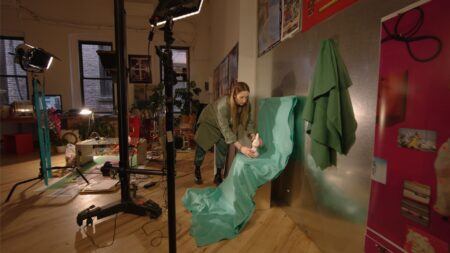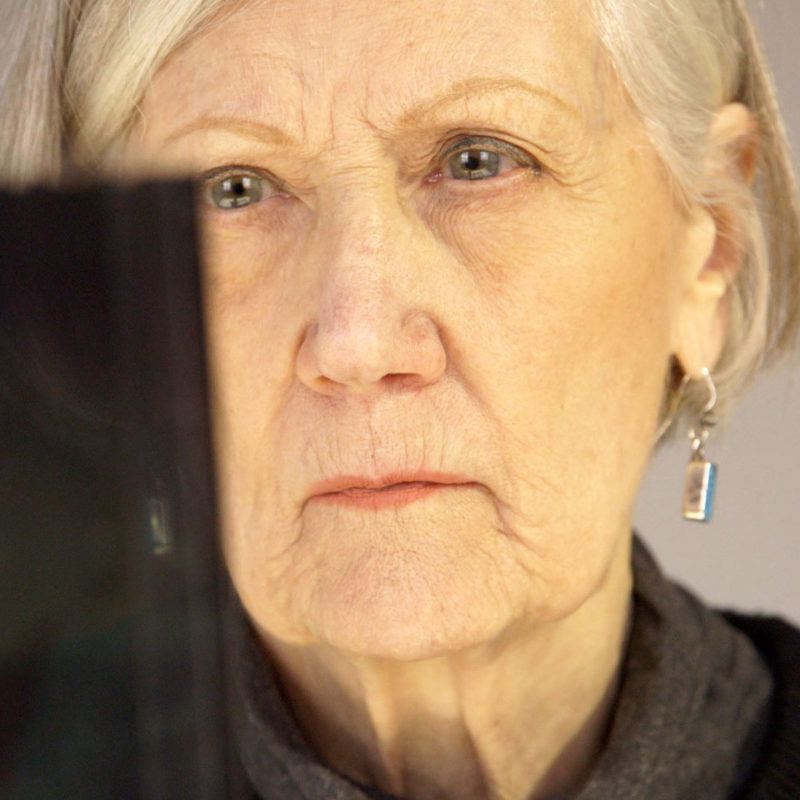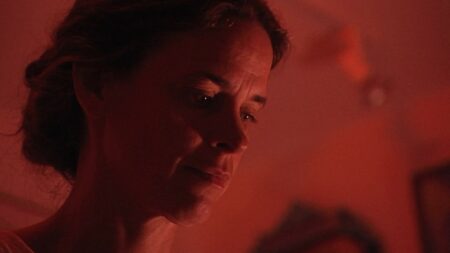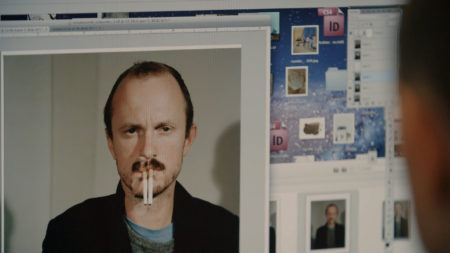Continue playing
(Time remaining: )
Play from beginning
Continue playing "{{ controller.videos[controller.getVideo(controller.currentVideo)].segmentParentTitle}}"
{{controller.videos[controller.getVideo(controller.currentVideo)].title}} has ended.
Beauty Was a ProblemBarbara Kasten
While installing her first major survey exhibition at the Graham Foundation in Chicago, Barbara Kasten describes the significance of her early cyanotypes created in the 1970s. Derived from the Greek word cyan, meaning “dark-blue impression,” cyanotype is a photographic printing process that typically results in blue images because of the iron compound used in the emulsion.
Kasten exposed textured materials like window screening, placing them on top of the print during the emulsion process to create layers of abstracted shapes that would later become a signature of her work. “This was my first attempt at photography,” says the artist. “And I liked the idea that it was more like a printmaking process, but it happened to be a photographic recording.”
The idea to experiment with cyanotypes occurred to Kasten while she was teaching textile sculpture; she was searching for a way to demonstrate how a flat woven surface could be rendered as a three-dimensional form. Even though Kasten loved the resulting images, she didn’t show her cyanotypes for a number of years. “For a long time I thought they were too beautiful,” explains the artist, “In the ’70s the rest of the world thought that beauty was a weakness. But the reality is, it’s a strength.”
Credits
Producer: Ian Forster & Nick Ravich. Interview: Stanley Nelson. Editor: Morgan Riles. Camera: Steve Delahoyde, Ben Kolak, & Sean Prange. Sound: Hamid Bendass. Artwork Courtesy: Barbara Kasten & Bortolami Gallery. Special Thanks: 900/910 Lake Shore Drive Condominium Association, Graham Foundation for Advanced Studies in the Fine Arts, Ellen Hartwell Alderman, & Alex Klein.
Extended Play is presented by Alta Art. Additional support provided by public funds from the New York City Department of Cultural Affairs in partnership with the City Council; the Art21 Contemporary Council; and by individual contributors.
Closed captionsAvailable in English, German, Romanian, Italian, Japanese, Korean, Chinese, Italian
Through the Art21 Translation Project, multilingual audiences from around the globe can contribute translations, making Art21 films more accessible worldwide. Translate this video now.
Interested in showing this film in an exhibition or public screening? To license this video please visit Licensing & Reproduction.
Barbara Kasten makes photographs and video projections in her studio that evoke an experience of movement through modernist architecture. While abstract, her work is subversively political, asking viewers to fundamentally question their perceptions. Trained as a sculptor, Kasten began to investigate photography through cyanotypes of fabrics and photograms of objects placed directly on the paper. This led her to photograph elaborate compositions of objects in the studio—such as Platonic shapes, paper, plexiglass, and wire—often illuminated by theatrical lighting and colored gels. Kasten’s video projections of rotating objects and planes of drifting color, cast onto building exteriors and interiors, destabilize the architecture through the optical fragmentation of forms.
“In the ’70s the rest of the world thought that beauty was a weakness, but the reality is, it’s a strength.”
Barbara Kasten





